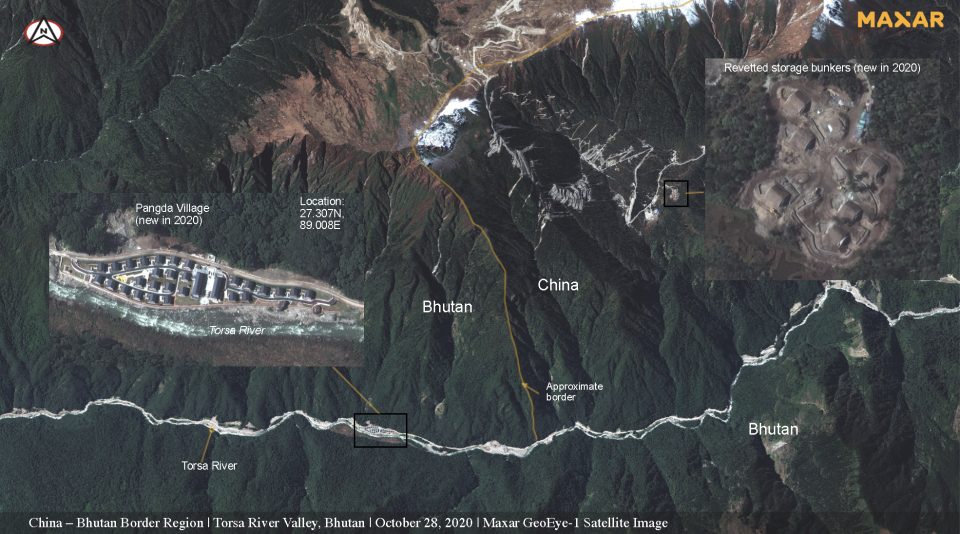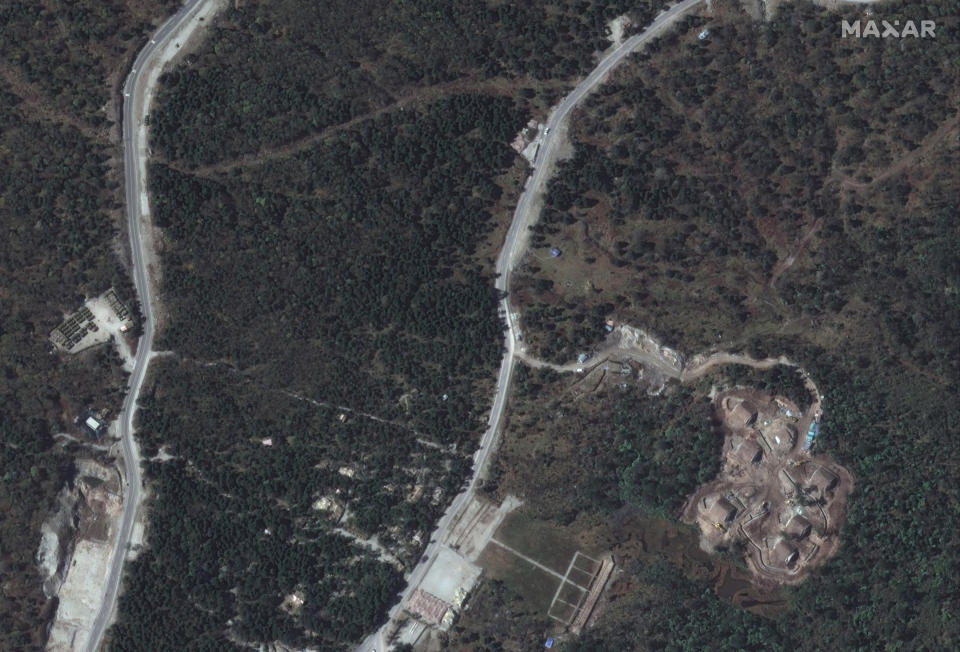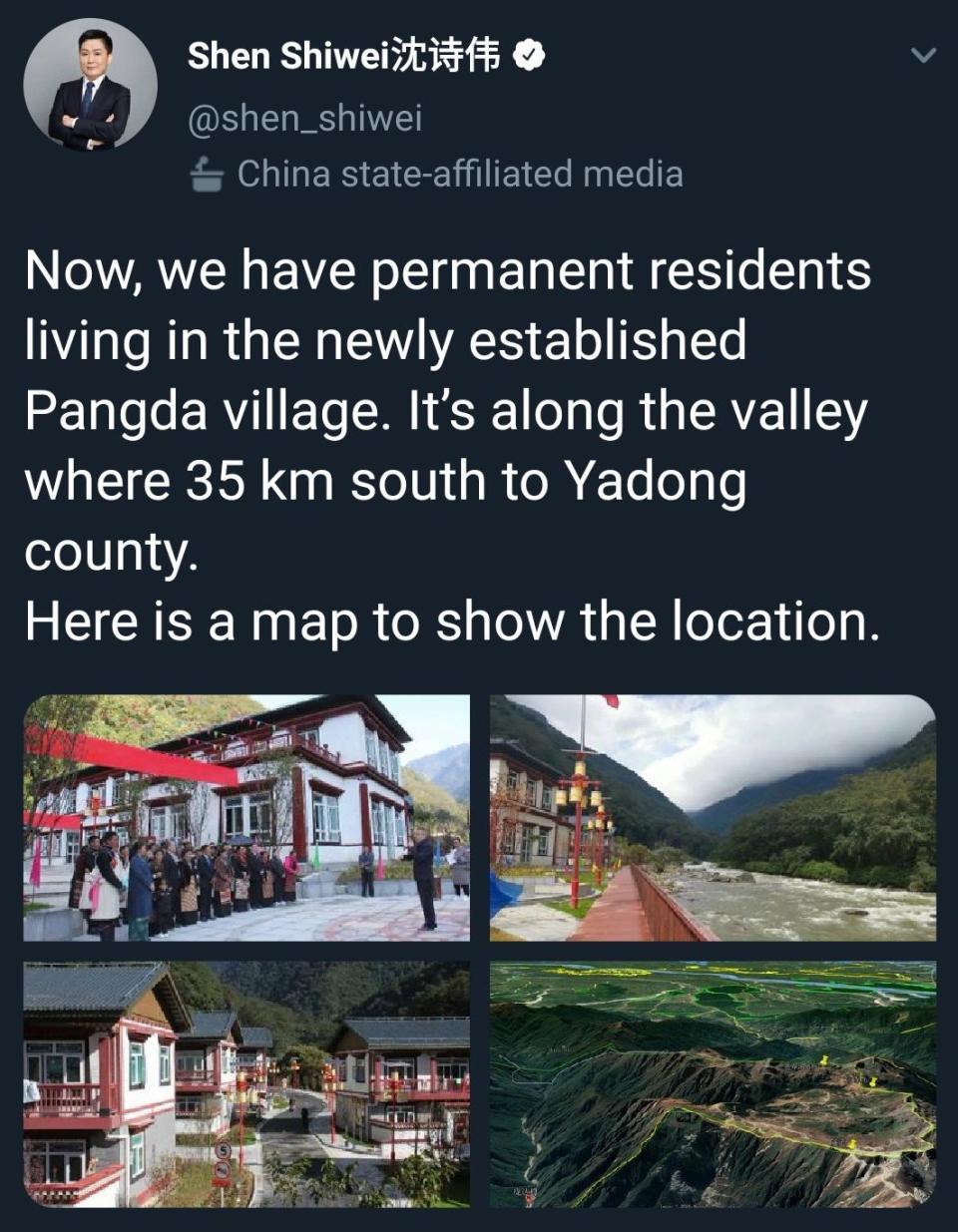Secret satellite images of new village reveal China's invasive act
Newly surfaced satellite images show China is quietly building infrastructure in contested territory in the Himalayas along a disputed border with India and Bhutan.
The area was the site of a months-long standoff between Chinese and Indian troops in the strategically important Doklam plateau.
Since then, both sides have sought to build up their ground forces in this inhospitable terrain that lies at a junction between China, the north-eastern Indian state of Sikkim and the Himalayan kingdom of Bhutan.
The Doklam plateau is disputed between Beijing and Bhutan while India supports Bhutan's claim over it.
However images captured by US-based satellite imaging company Maxar suggest China is deploying the same strategy of expansionism it has done in disputed areas of the South Chia Sea by unilaterally building up its physical presence, including a village which appears to be well inside the Bhutan border.
“There has clearly been significant construction activity this year all along the Torsa River valley area with extensive road-building [and] construction activity underway,” a Maxar spokesperson told Yahoo News Australia in a statement.
“As well as new military storage bunkers being built in China near the Doklam area.”

In addition to the small village, China appears to have built a road in the same area that stretches approximately nine kilometres inside Bhutanese territory.
According to India’s NDTV, which first published the satellite images this week, it’s thought the road could ultimately give Chinese forces an alternate route to the Zompelri ridge, where India’s military prevented Chinese troops from accessing it in the heated 2017 border standoff.
“Such is Xi's expansionism that China has gradually enlarged its encroachments on the territory of Bhutan, one of the world's smallest countries,” Indian-based International Affairs expert Dr Brahma Chellaney said on Twitter.
Speaking to NDTV, he said “step-by-step” China has been changing the status quo in the Docklam area “by building permanent structures and roads and even setting up villages on a plateau that was uninhabited until three years ago.”


Deleted message promotes new settlement
While China’s state media has denied it is building infrastructure inside the Bhutan border, a senior producer and analyst for one of the country’s state-sponsored media outlets appeared to accidentally let the cat out of the bag.
A tweet posted by CGTN news producer Shen Shiwei bragged about a new village in the region complete with Chinese flags, before giving oddly specific location details.
“Now, we have permanent residents living in the newly established Pangda village. It’s along the valley where 35km south to Yadong county. Here is a map to show the location,” he wrote.
Here's a CGTN news producer openly admiting that China has occupied and now populated part of a sovereign country. This Pangda village has been constructed (as shown by the included map) ~2.5km beyond Bhutan's international border. China now baselessly claims about 12% of Bhutan. https://t.co/3TxNSffYdJ pic.twitter.com/fEAgWXk7Ln
— Nathan Ruser (@Nrg8000) November 19, 2020
The tweet was later deleted as people online realised the significance of the boast when the map he shared didn’t quite add up.
Among those people was Nathan Ruser, a researcher at the Australian Strategic Policy Institute, who also shared a screenshot of the now deleted tweet on social media.

Chinese state-run media has reacted to the media coverage, by denying Indian reports that the settlement is in Bhutan territory.
In an article in the Global Times newspaper, Chinese experts were quoted refuting Maxar's claims, saying there was nothing untoward about the 27 households with 124 people who “voluntarily moved from Shangdui village of Duina prefecture of Yadong county to Pangda village in September 2020”.
Do you have a story tip? Email: newsroomau@yahoonews.com.
You can also follow us on Facebook, Instagram and Twitter and download the Yahoo News app from the App Store or Google Play.



